
When people hear the word “demon”, they usually think of a red-skinned man with horns. He might also carry a pitchfork around with him. And when they try to think of a female demon, a succubus usually comes to mind, something that seduces and sleeps with men. In truth, female demons have a much greater variety to them, appearing in various cultures around the world. Here are 30 female demon names to read about today.
Abyzou
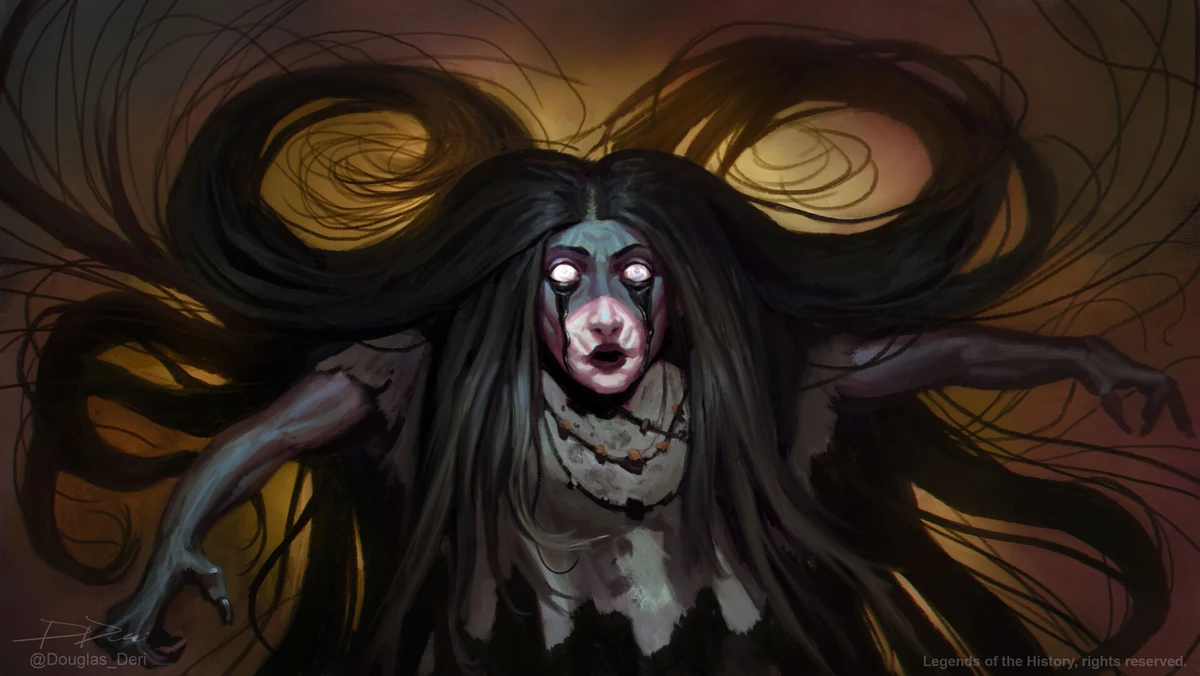
A demon that originally appeared in Akkadian folklore, her legend quickly spread across the Middle East and then to Europe. Her name may reflect a connection to the primordial Mesopotamian deities Apsu and Tiamat, however, little concrete evidence exists for this. She also had other names, such as Alabasandria in Egypt and Gylou in Babylonia. She also gained the name Obizuth in the 1st century AD apocryphal Judeo-Christian text, Testament of Solomon.
According to the text, Abyzou suffered from infertility, causing her to become envious of mortal women. This envy twisted her into a demon who wandered the world and caused miscarriages. She also targeted newborn children, strangling them to death. The text goes on to claim that King Solomon of Israel had her strung up with her own hair before the Temple in Jerusalem, as punishment for her crimes.
Agrat bat Mahlat
A demon from Jewish mythology, her name actually means “Agrat, daughter of Mahlat” in Hebrew. Her origins vary depending on the source, with the Kabbalah identifying her as a fallen angel and one of the consorts of the fallen archangel, Samael. The Kabbalah also identifies her with sacred prostitution, a practice associated with the Mesopotamian goddess Ishtar. Agrat bat Mahlat thus represents in this context a condemnation of a pagan practice and a warning against Jews from participating in it.
Ironically, the Kabbalah also claims that King David of Israel spent a night with her. This, in turn, makes the king the father of the demon Asmodeus. Rabbinic literature, however, identifies her as one of the demon Lilith’s daughters. It also describes her as a demon who haunts the sky on a chariot accompanied by 18 other demons. Rabbinic literature also mentions Agrat bat Mahlat as one of many demons who taught forbidden magic to humanity.
Ajatar
Also known as Ajattara, Aiatar, and Aijotar, she’s a demon that originates from Finnish mythology. The myth describes her as living in the forests of the Pohjola mountains, which most scholars traditionally regarded as completely fictional. However, some modern scholars instead refer to Pohjola as Scandinavia in general.
The myth also describes Ajatar as the granddaughter of a Hiisi, a forest giant with power over disease. Ajatar shares her grandfather’s power, in addition to commanding the gnomes, and even the pagan love and fertility deity, Lempo. Ajatar’s appearance also varies depending on the source, with older sources describing her as a wild woman with hair long enough to cover her breasts. Modern sources, though, frequently describe her as a dragon instead, or even having a half-human, half-snake appearance.
Alecto
Alecto is one of the Furies, a trio of demons in Greek mythology sent by the gods to deliver divine retribution. Her name reflects this, as it means “relentless and unending anger”. According to the myth, Alecto and the other Furies emerged from the Earth after the Titan Cronus spilled his father Uranus’ blood on the ground.
She also appears in Roman mythology, in particular, the Aeneid. In the Aeneid, Alecto receives a command from Juno to provoke the Latins against the Trojans. Alecto succeeds in getting Prince Turnus to become obsessed with destroying the Trojans. However, Alecto remains unsatisfied and asks Juno for permission to turn other Italian people against the Trojans. Juno refuses Alecto’s request, fearing doing so might cause Jupiter to intervene, with Juno handling the rest of the war with the Trojans going forward.
Ammit
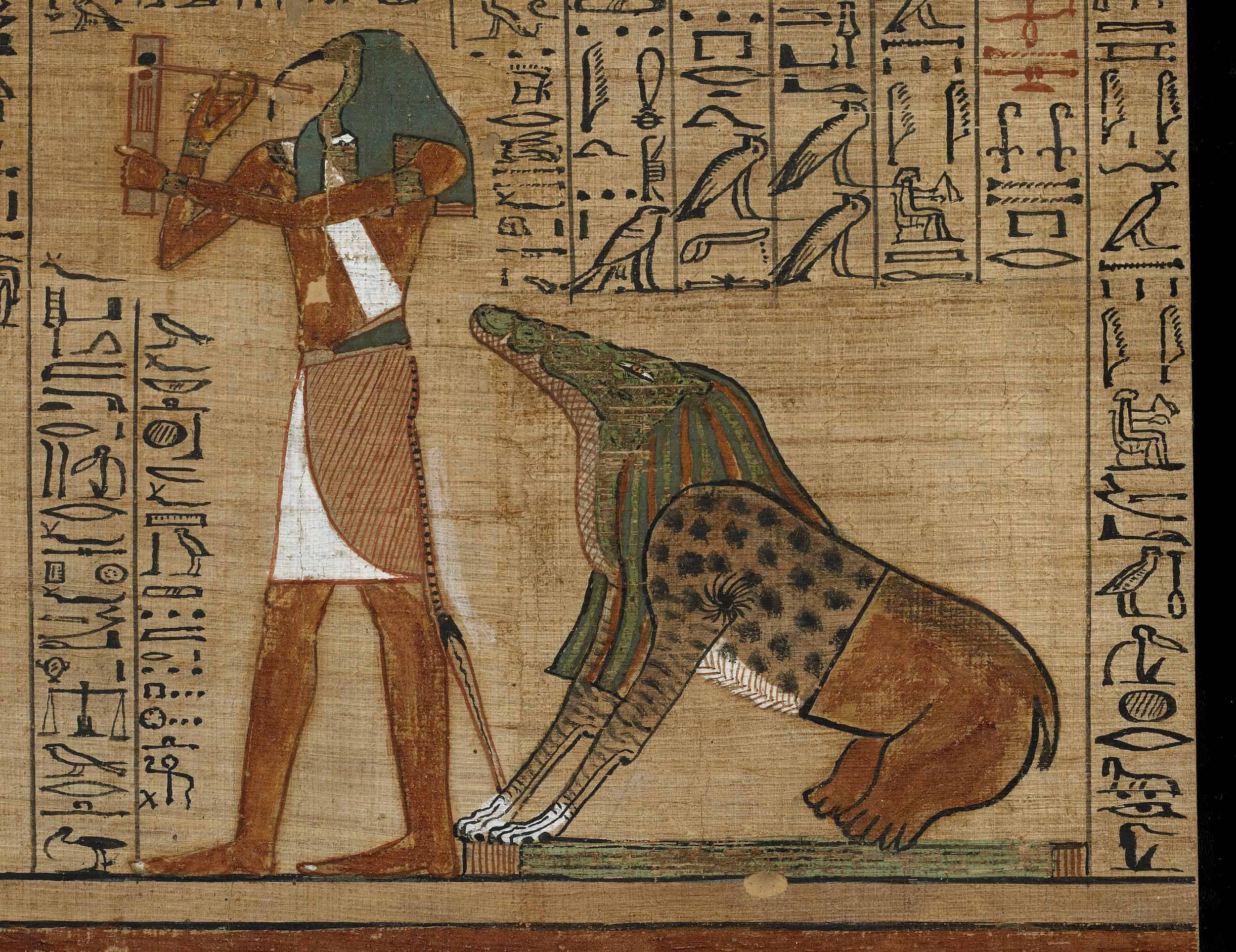
A demon from Ancient Egypt, she’s described as a lion with the head of a crocodile. Unlike most demons, however, Ammit doesn’t actually have an evil reputation. In fact, while the Ancient Egyptians feared her, they also saw her as an instrument of divine justice. This comes from her role in the judgment of the souls of the dead.
The Ancient Egyptians believed that before a soul can enter the afterlife, the god Anubis weighs their hearts against the Feather of Truth. If the heart weighs less than or equal to the Feather of Truth, only then can the soul enter the afterlife. But, if the heart weighs heavier than the Feather of Truth, Anubis would instead feed the soul to Ammit.
Despite her divinely-ordained role, however, Ammit remained a demon. This means that Ancient Egyptians never actually worshiped her, for all that they feared and respected her.
Astaroth
Astaroth’s gender actually remains a source of contention among demonologists. This results from how his or her gender varies depending on the source. Older sources identify her with the Mesopotamian goddess Ishtar, mentioned as Ashtoreth or Ashtaroth in the Old Testament. This later became transliterated as Astaroth in both Greek and Latin.
Astaroth was also later identified as male in the 15th century, as part of the European fascination with the occult at the time. In particular, The Lesser Key of Solomon gives him the noble title of a duke. According to occultists, Astaroth ruled over various traits such as laziness, self-doubt, and surprisingly, rationality. He also became associated with mathematics, which some scholars attribute to the religious backlash against the growing influence of science at the time.
Baba Yaga
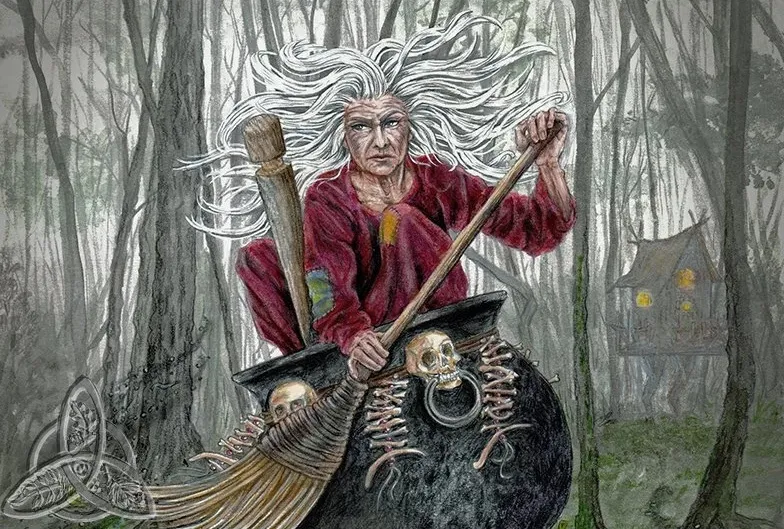
A shared character from the various Slavic cultures of Eastern Europe, Baba Yaga’s nature depends on the source. Some stories also describe her as a single individual, while other stories instead identify “Baba Yaga” as a title shared by a trio of women. All stories, though, describe her as a fearsome-looking old woman who flies at night on a mortal while carrying a pestle.
While commonly seen as an East European boogeyman used to scare unruly children, folklore traditionally gives her an ambiguous characterization. At worst, she has a genie-like tendency to grant wishes that come with undesirable side effects. At best, however, Baba Yaga genuinely helps people in need, usually, people lost in the forest or the wilderness.
Cheshmak
Also known as Cesmak, she appears in Zoroastrian myths. She’s described as having a big-breasted body made from gold. She’s also associated with whirlwinds, destruction, and general bad weather.
According to Zoroastrian myths, Cheshmak ambushed the prophet Zoroaster on his return from Heaven, where he met with the god Ormuzd. Cheshmak tried to tempt Zoroaster with worldly pleasures, but Zoroaster saw through her and rejected her advances. Enraged, the demon tried to attack the prophet, but Zoroaster overcame and banished her instead.
That said, however, Cheshmak remains an obscure character in Zoroastrian literature. This is because of her newness, as she only gets mentioned in the Pahlavi texts from the 9th century AD. In contrast, the orthodox texts of Zoroastrianism, the Avesta, go back to the 7th century AD at the latest, and the 3rd century AD at the earliest.
Daruka
A demon from Hindu mythology, Daruka stands out among demons as she later becomes a goddess. Originally the wife of a demon named Daruk, even as a demon Daruka already worshiped Parvati. When her husband started attacking the followers of Shiva, he provoked the gods’ anger against his home city of Darukavana. Daruka then called on Parvati, which allowed her to move Darukavana under the sea, and out of the gods’ reach.
Daruk continued his attacks on Shiva’s followers, however, and eventually imprisoned a devotee named Supriya in Darukavana. Supriya managed to convert many of the city’s demons to Shiva’s worship and started a revolution. This, in turn, allowed Shiva to reach Darukavana and defeat Daruk. Parvati intervened to spare the repentant demons from Shiva’s wrath, with Shiva deciding instead to teach them the path to righteousness. This led the demons to become minor gods and goddesses themselves, in service to Shiva and Parvati.
Echidna
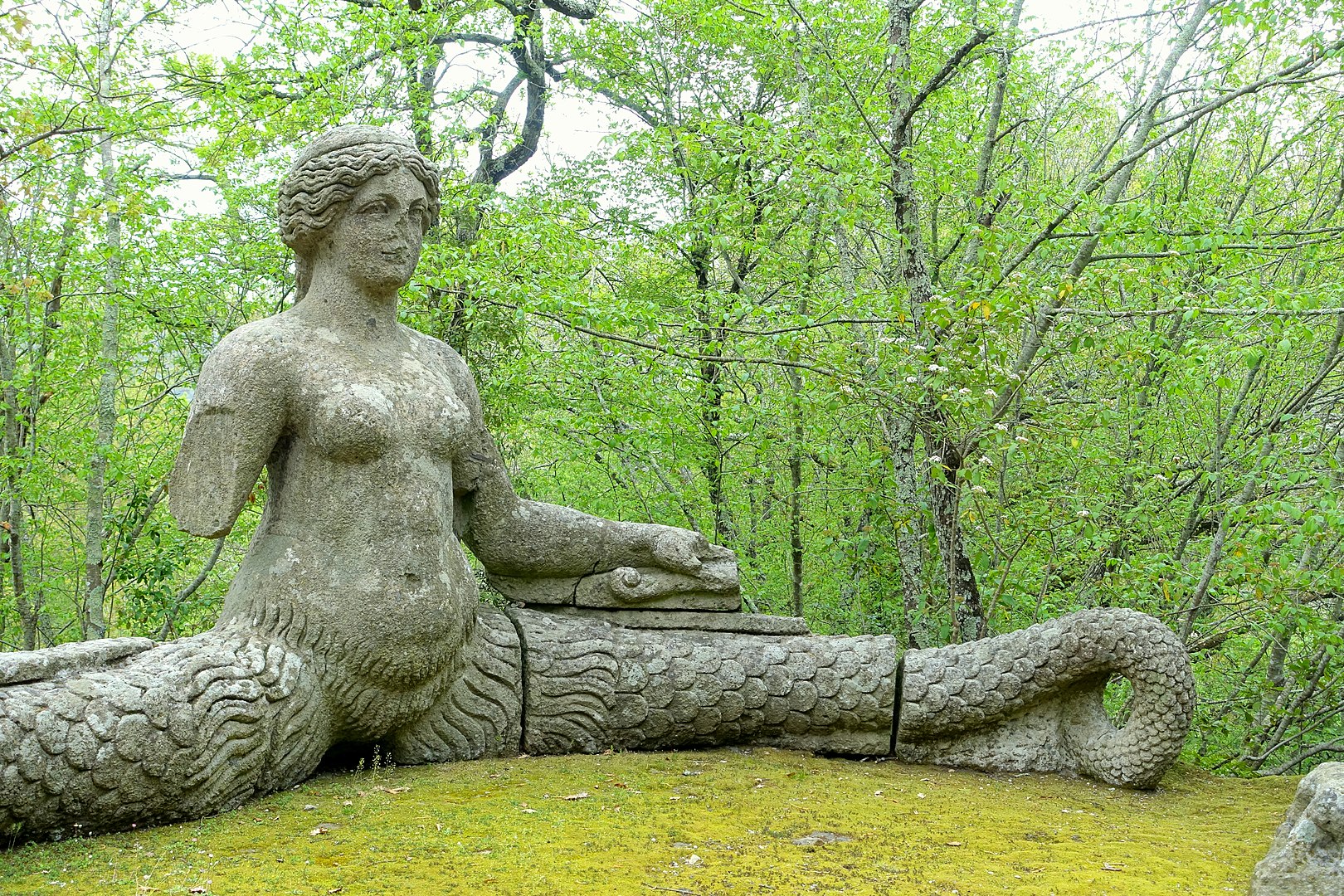
A demon from Greek mythology, Echidna supposedly had a woman’s upper body and a snake’s lower body. She held the title of “Mother of Monsters”, having birthed various monsters with her mate, Typhon. Their children included Cerberus, the three-headed dog that guarded the gates of the underworld. She also birthed the Chimera, the Hydra, the Nemean lion, and the Sphinx. These monsters were later hunted by the great heroes of Greek mythology, such as Heracles.
Echidna herself died in her sleep, killed by the hundred-eyed giant Argus, under the command of Hera. Echidna’s role as the mother of monsters who later became hunted down by heroes has led some scholars to theorize she may have a non-Greek inspiration. Specifically, Tiamat, the primordial Mesopotamian ocean goddess, birthed countless demons and monsters to fight her rebellious children. This ties in with how other Mesopotamian myths inspired other Greek myths, such as that of King Gilgamesh of Uruk, who inspired the legend of Heracles.
Eisheth
Another demon from Jewish mythology, her name literally means “Woman of Whoredom”. She’s also mentioned in the Kabbalah, a school of mysticism that developed in medieval Europe. According to the Kabbalah, Eisheth rules as a princess over the demonic sphere of Gamaliel. It also describes her as the feminine embodiment of sin, and who devours the souls of the damned in Hell. She’s also described as opposing the angelic choir of Yesod, ruled over by the Archangel Michael. That said, this remains a source of contention among demonologists, over how depending on the source Lilith instead rules over Gamaliel instead of Eisheth.
Empusa
Also known as Empousa, she’s a demon from Greek mythology and one who serves the goddess of witchcraft, Hecate. The myth describes Empusa as having shapeshifting abilities, with her true form identifiable by its single leg of copper. She appears in various works, including comedies. In particular, she appears in Aristophanes’ The Frogs, with Empusa ambushing the god Dionysus and his slave Xanthus. That said, the comedy treats her presence as ambiguous, with some interpretations treating it as Xanthus playing a joke on his master.
The Empusa also appears in the biographical work, Life of Apollonius of Tyana, from the 1st century AD. There, she’s described as seducing one of the philosopher’s students, only to devour him after letting his guard down. The Empusa later appears to Apollonius himself, during a trip to India. However, the philosopher rallies his traveling companions to collectively curse the demon, causing it to run away.
Gremory
This demon’s exact origins remain unclear, although she’s usually associated with various medieval grimoires. In particular, The Lesser Key of Solomon describes her as a duchess commanding 26 of the legions of Hell. Other grimoires also agree with her status as a duchess of Hell but vary in the number of demonic legions she commands. The Munich Manual of Demonic Magic attributes 27 legions to her, while the Liber Officiorium Spirituum attributes between five to 42 legions to Gremory.
Aside from her rank and the number of demons under her command, the grimoires also describe other attributes. These include her appearance, that of a beautiful woman riding a camel, wearing a duchess’ crown. They also describe Gremory as having the power to reveal secrets, such as those connected to wealth and fortune. Finally, she supposedly has the power to make women fall in love with her petitioners.
Hannya

The term “Hannya” actually doesn’t refer to a single entity, but a whole type of them. They appear in the noh genre of traditional Japanese theater, with Hannya having a thematic complexity unusual among demons. Specifically, while demons typically have a straightforward evil nature, this isn’t the case for Hannya. As demons, Hannya have a dangerous streak, but they can also express grief and regret.
That said, this also depends on the sub-type of Hannya that a specific demon belongs to. Of the Hannya’s three sub-types, two of them, the namanari and the chunari actually have human origins. This makes them more likely to express grief and regret, as they’re actually the souls of women who suffered wrongful deaths. The injustice done to them, as well as their dying desires for vengeance, cause their spirits to transform into demons. In contrast, the last sub-type of Hannya, the honnari, have truly-demonic natures, and usually lacks any redeeming characteristics at all.
Jahi
Another demon from Zoroastrianism, Jahi embodies lasciviousness, with the demon having the epithet of “the whore”. Despite this unflattering reputation, she’s seen as one of the most powerful demons in existence, able to kill men with a single look. She’s also sometimes known as Jeh and as the consort of Ahriman, the Zoroastrian god of evil.
The myth also claims that at one point, the god of good, Ormuzd, managed to render Ahriman dormant for 3,000 years. However, Jahi managed to awaken Ahriman by sexually arousing him. Ahriman rewarded her with menstruation, which he commanded her to share with human women, thus defiling them in the process.
Jorogumo
Spider-like demons from Japanese folklore, jorogumo also have shape-shifting abilities. They use this ability to transform themselves into beautiful women, allowing them to seduce men. Once her prey drops his guard, the jorogumo proceeds to kill and eat him. Some sources also describe jorogumo commanding many smaller spider demons. Unlike a jorogumo, these lesser demons cannot change their shape but can breathe fire instead.
Other stories also describe jorogumo having their seduction undone by Buddhist monks. Unfortunately, despite the monks’ efforts, the victims find themselves unable to forget the jorogumo’s beauty, despite knowing about their true natures. In one story, a man freed from a jorogumo’s grasps asks a mountain god for his blessing to marry the jorogumo. The god refuses, but the man chases after the jorogumo regardless and disappears without a trace.
Lamashtu
A demon from Mesopotamian myth, the Sumerians saw Lamashtu as the worst of her kind. So much so, in fact, that they invoked other demons, such as Pazuzu, as a form of protection against Lamashtu. Ironically, Lamashtu herself counted the sky god, Anu, as her father, although her mother’s identity remains unknown.
Lamashtu’s evil reputation resulted from her habit of targeting women in labor, aiming to kill either or both the mother and her child. She also targeted babies even after their birth, spitefully kidnapping them while their mother breastfed them. Lamashtu would then take them out into the wilderness, where she would drink their blood and tear out their bones to suck out the marrow. Her particularly vicious and evil reputation even when compared to other demons, along with her female gender, has led some scholars to theorize that Lamashtu may have inspired the demon Lilith in Jewish mythology.
Lamia
Another demon from Greek mythology, and one with a tragic origin. Originally a beautiful human woman, Lamia ruled Libya as its queen. Unfortunately, her beauty caught the attention of Zeus, who started an affair with her. When his wife, Hera, discovered the affair, she kidnapped and killed all of Lamia’s children by Zeus.
Lamia’s losses drove her insane, leading her to kill other children and devour their flesh. This corrupted her, turning her into a snakelike monster driven to continue to prey on children. Hera, still dissatisfied with this much, cursed Lamia further with insomnia. The goddess also removed Lamia’s eyes, so that she would always see her missing children’s faces in her head. Zeus, out of pity, finally responded by giving Lamia new eyes, as well as the power to see the future.
Leviathan
A demonic sea serpent mentioned in the Bible, the Leviathan’s gender actually remains a point of contention among scholars. On one hand, the original sources do not mention Leviathan having a gender at all. On the other hand, medieval folklore commonly has Leviathan as female. The latter to better differentiate her from another demon in the Bible, the Behemoth.
Regardless of her gender, Leviathan appears in various orthodox texts, such as Psalms, as well as the Books of Amos, Isaiah, and Job. She also appears in at least two apocryphal Biblical texts, the Books of Enoch and Jonah. Religious tradition associates Leviathan with chaos, which some scholars think may point to a common origin with the Mesopotamian deity Tiamat. Other traditions also claim that Leviathan will devour the souls of the damned at the end of the world. Christian theology also associates Leviathan with the capital sin of envy.
Lilith

The archetypal female demon of Judeo-Christian theology, Lilith appears in the Bible’s Book of Isaiah. She’s also mentioned in Jewish mythology, although Christian theology treats this as an apocryphal source.
According to the myth, God created Lilith as the first woman, and not Eve. Unlike Eve, God created Lilith in the same way he created Adam, taking dirt from the ground, shaping it into a human body, and breathing life into it. However, Lilith refused to submit to Adam, which led God to first banish Lilith from the Garden of Eden and then to make Eve from one of Adam’s bones instead. Feminist scholars have since used this myth as evidence for their patriarchal criticisms of traditional religion.
The myth later goes on to claim that Lilith mated with demons, and in so doing, became a demon herself. Her children with other demons became the lilim, or the succubi, who wander the world seducing men to mate with them, and birth more succubi in the process.
Mahishi
Another demon from Hindu mythology, the Mahishi had a brother, the shape-shifting demon Mahishura. According to the myth, Mahishura almost succeeded in defeating the gods led by Indra, only for Parvati to outwit and kill him instead. Mahishi swore to avenge her brother and managed to convince the creator god, Brahma, to make her invincible.
However, Brahma left a loophole in his gift to Mahishi, declaring that a son of Shiva and Vishnu would have the destiny to defeat her. Mahishi ignored this as an impossibility, thanks to both Shiva and Vishnu’s male gender. She then did what her brother could not: defeating the gods and usurping the throne of Indra. Unknown to Mahishi, though, Shiva already had a son by Mohini, a female avatar of Vishnu, Ayyappan. The gods then asked him for help, and Ayyapan ascended to heaven, where he fulfilled his destiny by throwing Mahishi from the sky, causing her to fall to her death.
Megaera
Another one of the Three Furies from Greek mythology, like her other sisters, Megaera delivered divine retribution against mortals who had offended the gods. Unlike her sisters, though, Megaera’s origins vary depending on the source. Most sources claim that she appeared with the other Furies from the Earth when Cronus spilled his father Uranus’ blood. However, other sources also describe Megaera as the daughter of Nyx, the goddess of night, and Acheron, also known as the Styx, the river which flows between the Earth and the Underworld.
Megaera has also become associated with envy, as a result of her name meaning “the jealous one” in Ancient Greek. In fact, it has become the root of various words, such as the French megerethe and the Portuguese and Italian megera. All those words negatively refer to a bitter and spiteful woman.
Mormo
Mormo is an obscure demon from Greek folklore, analogous to the boogeyman, only female. Scholars note that Mormo only appears in one classical source, a letter from a man named Scholios to the early Athenian leader, Aristides. Scholios describes a Mormo as a Corinthian woman who ate her own children. This twisted her into a monster, who escaped from justice using a pair of wings.
The Greek comedian Aristophanes also mentioned Mormo, although he did so in a non-serious way. In particular, he treated her dismissively, in the sense that he described only as something mothers would say to make unruly children obey. Sources from the Eastern Roman Empire later mentioned Mormo, with the Romans equating her with Lamia. Princess Anna Komnene particularly described Mormo as a demon that targeted infants around the time of the First Crusade.
Naamah
Naamah first appeared in the Zohar, one of the books that started the mystical Jewish tradition of the Kabbalah. That said, she has her roots in the Talmudic-midrashic tradition of Jewish literature, which describes Naamah as the sister of Tubal-cain, one of the people who lived before the Great Flood. Naamah had a reputation as a seductress, in particular, using her talent as a musician. She even managed to seduce a fallen angel, Shamdon, and became pregnant with the demonic prince, Ashmodai.
However, the Zohar does away with this tradition entirely. Instead, it describes Naamah as a fallen angel herself and repeatedly seduces Adam to have demonic children with her. She also works with Lilith to seduce the angels Azazel and Ouza, causing them to fall from grace.
Nure-onna

A demonic sea serpent from Japan, the Nure-onna appears as a giant snake with a woman’s head. She supposedly eats people she catches at sea, but Japanese literature has surprisingly little material on her. This, even though the Nure-onna widely appears in the art of the Tokugawa Shogunate.
One story from 1819 describes a group of men lost in the sea who accidentally saw the Nure-onna washing her hair. They escaped without getting noticed, and on returning to shore, warned those heading out to sea of her presence. Unfortunately, their warnings went ignored, and the men who later went out to sea never returned.
Onibaba
A common type of demon in Japanese folklore, it is described as the karmic fate of women who died full of resentment. They appear widely in Japanese legends, such as that of Momiji, a woman who became an onibaba after getting exiled for plotting to kill her lover’s wife. She later became the leader of a bandit army, eventually forcing Emperor Reizei to send the hero, Taira no Kuremochi, to end her threat. Even then, Kuremochi had to use a special sword the gods gave him to kill Momiji. Other onibaba legends include Suzuka Gozen, who fought and died against the semi-historical hero, Sakanoue no Tamuramaro.
Onoskelis
A demon mentioned in the apocryphal text, Testament of Solomon, who once confronted King Solomon of Israel. The text describes Onoskelis as having the body of a beautiful woman from the waist up, but from the waist down, she had the legs of a donkey.
During her confrontation with the king, Onoskelis admitted that she seduced men into worshiping her. She also admitted that she knew they only did so in the hope of getting rewards from her, rewards that she rarely gave them. When Solomon asked about her origins, Onoskelis revealed that a mysterious voice echoing from a “black heaven” created her, but she didn’t know more than that.
Despite knowing her demonic nature, Solomon had Onoskelis spin the ropes for the Temple in Jerusalem. He later recorded in the text that Onoskelis wanders the Earth on the night of the Full Moon. Otherwise, she spends most of her time hiding in her cave, living as a hermit would.
Poludnitsa
A demon from Slavic folklore, she also has the title of Lady Midday, referring to her nature as a noon demon. Her appearance similarly reflects this, that of a young woman in white who roamed the countryside in the middle of the day.
Whenever she encountered people, she would ask them various questions or riddles. She might also just strike up a random conversation. If the people she encountered made an incorrect answer or talked rudely to her, she would either behead them or cause various illnesses. These include sunstrokes, neck pain, or even madness.
One story also describes Poludnitsa as challenging young girls to a dancing competition. More often than not, she would win, with her opponent forced to dance until the sunset. On the rare occasions she lost, though, Poludnitsa would take it with surprising grace, and reward her opponent with treasures.
Tisiphone
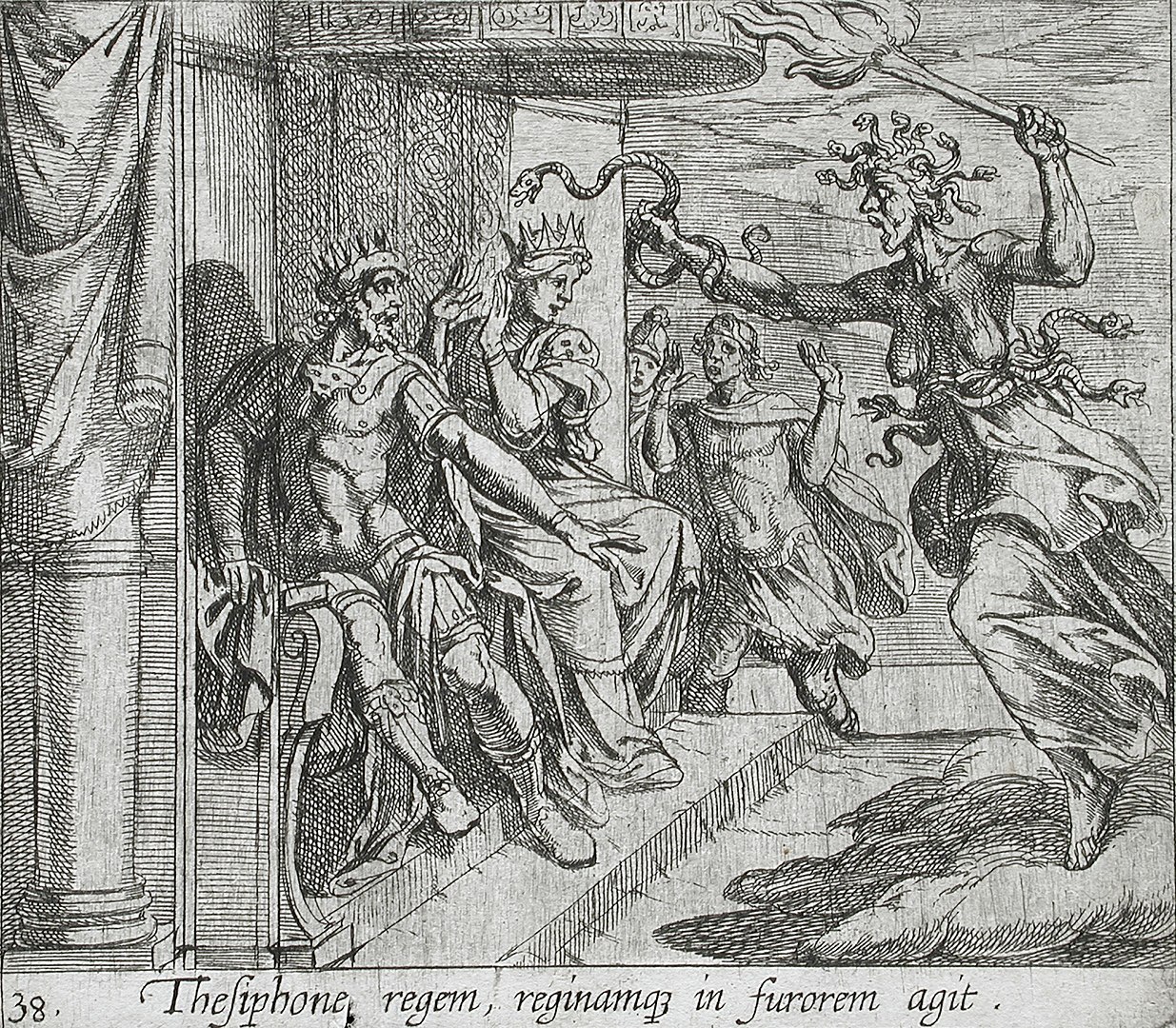
The last of the three Furies that brought down divine retribution on mortals. The Aeneid also describes her as one of the guardians of Tartarus, the primordial hell which serves as the Titans’ prison. She also appears in the Roman play, Thebaid, where she surprisingly acts on Oedipus, a human’s instructions instead of a god’s. Specifically, Tisiphone agrees to Oedipus’ request that she keep the civil war between his sons Eteocles and Polynices going. She also later drives the hero Tydeus mad, causing him to devolve into cannibalism.
Tisiphone also appears in various works outside of Greco-Roman literature. For instance, she appears in Geoffrey Chaucer’s Troilus and Criseyde, where she helps the narrator present a tragedy properly. Tisiphone also appears in Dante’s Inferno, where along with her sisters, she threatens to call down the Gorgon Medusa on Virgil and Dante.
Yama-uba
Mountain demons from Japanese mythology, the Yama-uba tend to have an ambiguous presentation. Some myths describe them as seducing men, typically travelers and merchants passing through the mountains, only to eat them afterward. Other myths describe them as helping pregnant women give birth, only to kidnap the baby right after.
That said, many other myths also present them in a more favorable light, such as that of the folk hero Kintarou. According to the myth, Kintarou and his mother had to run to the mountains to avoid getting killed in a civil war. Kintarou’s mother died in the wilderness, but a Yama-uba found the orphaned boy and raised him as her own son. Some versions of the story even have Kintarou’s mother as a Yama-uba from the start.
Similarly, many old families in Japan’s Aichi Prefecture attribute past successes to a Yama-uba’s patronage. In return, those same families built shrines and temples to the Yama-uba, and worship them as guardian deities.
Was this page helpful?
Our commitment to delivering trustworthy and engaging content is at the heart of what we do. Each fact on our site is contributed by real users like you, bringing a wealth of diverse insights and information. To ensure the highest standards of accuracy and reliability, our dedicated editors meticulously review each submission. This process guarantees that the facts we share are not only fascinating but also credible. Trust in our commitment to quality and authenticity as you explore and learn with us.


